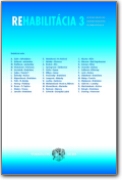Effect of vibroacoustic therapy on spasticity and heart rate variability in two young adults with cerebral palsy
DOI:
https://doi.org/10.61983/lcrh.v60i3.11Keywords:
cerebral palsy, Music, vibroacoustic therapy, spasticity, heart rate variability, rehabilitationAbstract
Summary: Vibroacoustic therapy (VAT) utilizes sinusoidal, low-frequency sound vibrations along with music for therapeutic purposes. Existing research indicates the efficacy of this therapy in addressing spasticity among children with cerebral palsy (CP). However, there is a notable absence of evidence regarding its impact on adolescents and adults with CP. This study, consisting of two single case studies employing an ABA' design, aimed to explore the effects of VAT on spasticity and heart rate variability (HRV) in individuals with CP.
VAT was administered using the VIBROBED vibroacoustic rehabilitation bed and the Elements program, involving a 20-minute session with a musical composition incorporating biorhythmically dosed low-frequency sounds through amplitude and frequency modulation. The participants, a 20-year-old woman and a 19-year-old man, both experiencing spasticity and motor-related issues, demonstrated improved spasticity levels, with at least one level reduction on the Ashworth scale following each VAT session.
Upon analyzing the impact of VAT on HRV, conflicting trends were observed in the reported values of mean heart rate (HR) and root mean square of successive differences (RMSSD) parameters in both cases. While the intervention increased parasympathetic activity in the first case, it led to a decrease in parasympathetic activity in the second case. The results from these measurements and subsequent analyses do not provide a clear prediction of how VAT affects the autonomic nervous system (ANS). It appears that various influences, including interindividual differences in organismal reactivity, contribute to the tendency towards either supporting the parasympathetic or sympathetic part of the ANS as a result of VAT.
Considering the limitations of this pilot study, it is recommended that these contradictory trends become the focus of a new study with a modified measurement design. This would enable the examination of interindividual differences in VAT reactivity and the effects of other intervening parameters in the CP population.
Published
How to Cite
Issue
Section
License
Copyright (c) 2023 journal REHABILITÁCIA

This work is licensed under a Creative Commons Attribution-NonCommercial-ShareAlike 4.0 International License.


